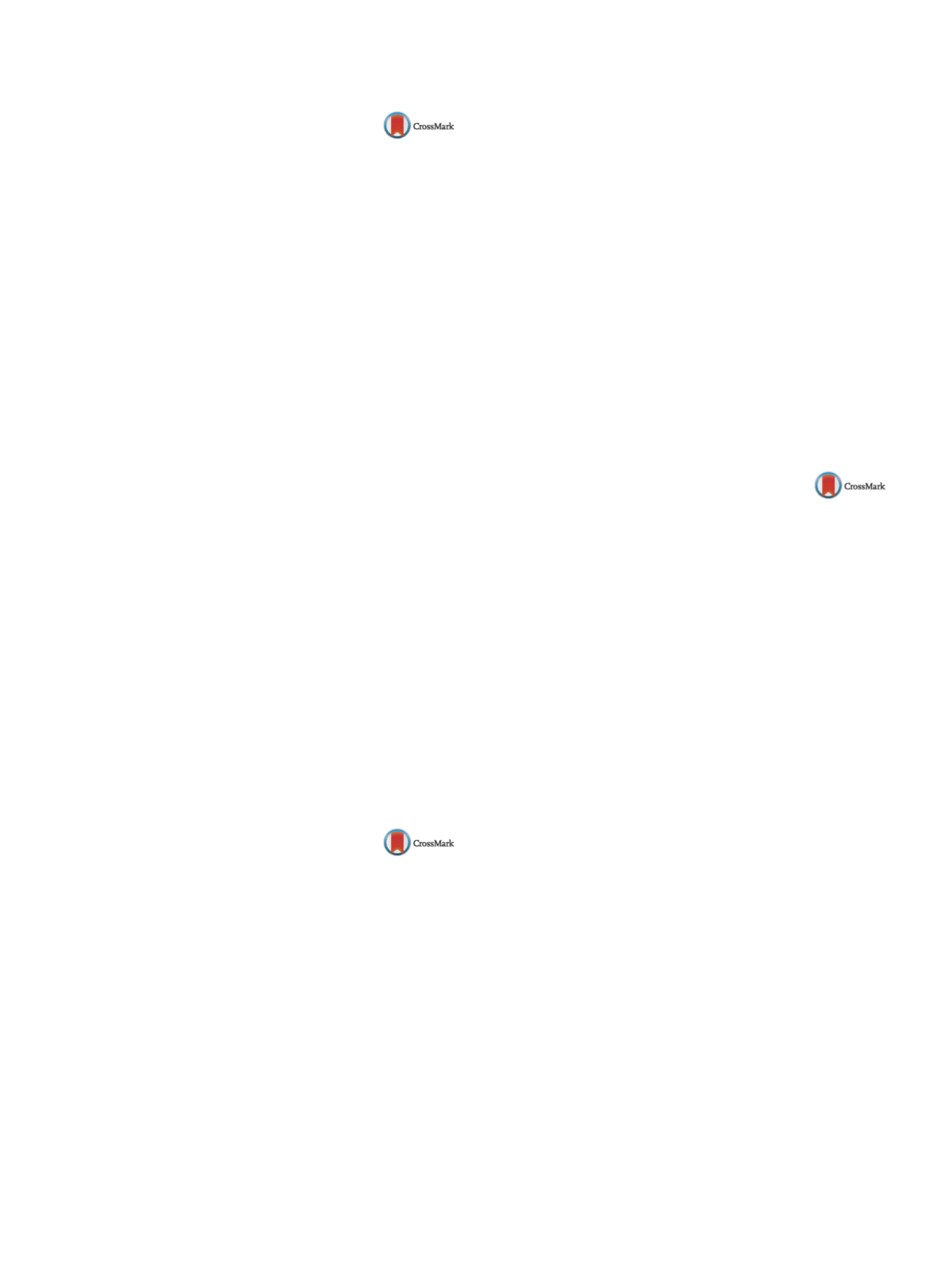

S766
25th European Congress of Psychiatry / European Psychiatry 41S (2017) S710–S771
EV1111
Benefits of the functional ensemble of
temperament framework in
assessment of mental disorders:
Examples
I. Trofimova
McMaster University, Psychiatry and Behavioral Neurosciences,
CILab, Hamilton, Canada
Introduction
An integration between psychiatry, neurochemistry
and differential psychology gives an evidence-based framework for
the diagnosis of mental illness rooted both in modern neurophysi-
ology and clinical observations.
Objectives
To investigate whether, a neurochemical model of
temperament might (FET) provide a better discrimination between
major depression (MD), anxiety (GAD), co-morbid depression and
anxiety and delusional disorders than existing emotionality-based
temperament models.
Methods
Three studies compared the profiles on temperament
and personality disorder inventories in patients who were diag-
nosed and treated for named disorders across four adult age groups
(17–24, 25–45, 46–65, 66–84).
Results
The FET distinguished between MD and GAD in line with
the DSM descriptors and showed significant differences for the
traits of motor endurance and motor tempo (much lower values
in MD), and neuroticism (much higher value in GAD). The results
showed benefits of differentiation between physical and social
types of fatigue as a symptom of MD and that high impulsivity
and low plasticity can be also considered symptoms differentiat-
ing between mental disorders. Moreover, high sociability appeared
as a symptom associated with high dominance–mania tendencies.
The FET framework appeared to be sensitive to age and sex dif-
ferences: higher anxiety and anti-social symptoms appeared to be
more prominent in the younger age (unlike depression symptoms),
and declined with age.
Conclusions
This study suggest the utility of using a functional
approach to both taxonomy of temperament and classification
of mental disorders and the benefits of systemic differentiating
between 12 functional aspects of behavior, with special attention
to non-emotionality-related aspects of behavior.
Disclosure of interest
The author has not supplied his/her decla-
ration of competing interest.
http://dx.doi.org/10.1016/j.eurpsy.2017.01.1441EV1112
Self-transcendence and excessive TV
commercial viewing in senior pupils
A. Vasilchenko
1, S. Tukaiev
2 ,∗
, Y. Havrylets
3, V. Rizun
3,
D. Kashpur
4, N. Pogorilska
4, O. Radchuk
5, I. Zyma
6,
G. Abbasova
7, L. Derevinskaya
71
National Taras Shevchenko University of Kyiv, Department of
Physiology of Brain and Psychophysiology, Kiev, Ukraine
2
National Taras Shevchenko University of Kyiv, Department of Social
Communication, Department of Physiology of Brain and
Psychophysiology, Kiev, Ukraine
3
National Taras Shevchenko University of Kyiv, Department of Social
Communication, Kiev, Ukraine
4
National Taras Shevchenko University of Kyiv, Faculty of
Psychology, Kiev, Ukraine
5
Universit
ɑ
della Svizzera italiana, Institute of Communication and
Health, Lugano, Switzerland
6
National Taras Shevchenko University of Kyiv, Laboratory of
Physicochemical Biology, Department of Physiology of Brain and
Psychophysiology, Kiev, Ukraine
7
High school 6, High school 6, Chernihiv, Ukraine
∗
Corresponding author.
Self-transcendence is an important component of mental health
and emotional well-being, and associates with everyday stress. The
aim of this study was to reveal the relationships between excessive
TV commercial viewing and self-transcendence. Forty-two healthy
senior pupils aged 14–17 years participated in the study. We used
the temperament and character inventory by cloninger, cloninger
tridimensional personality questionnaire, the school anxiety test
by Philips, Maddi Hardiness survey, and the emotional intelligence
self-evaluation by Hall. We found that excessive TV commercial
viewing has been linked to self-transcendence, which directly cor-
relates with empathy and school anxiety. There was an inverse
correlation between self-transcendence and self-directedness. We
also found interrelations between self-transcendence and reward
dependence, mediated by the noradrenergic brain system. We
argue that the propensity for watching TV commercials and self-
transcendence may determine the activity of monoaminergic brain
systems along with the constitutional traits and personality char-
acteristics.
Disclosure of interest
The authors have not supplied their decla-
ration of competing interest.
http://dx.doi.org/10.1016/j.eurpsy.2017.01.1442EV1113
Association of behavioral “Theory of
Mind” Test performance with
neurophysiological and vegetative
parameters in schizophrenia patients
and healthy subjects
Z. Garakh
1 ,∗
, Y. Zaytseva
2 , 3, A. Morozova
3, V. Strelets
11
Institute of Higher Nervous Activity and Neurophysiology of RAS,
Psychophysiology, Moscow, Russia
2
National Institute of Mental Health, Klecany, Czech Republic,
Applied Neuroscience and Brain Imaging, Prague, Czech Republic
3
Charles University in Prague, Prague, Czech Republic
∗
Corresponding author.
Introduction
Theory of Mind (ToM) deficit is investigated by psy-
chological and neurobiological methods using a range of social
cognitive tests, including the verbal test Hinting Task. How-
ever, it remains unclear whether there is a connection between
ToM results and the physiological characteristics in norm and in
pathology.
Objectives
We performed the comparison of Hinting Task per-
formance in patients with schizophrenia and healthy subjects;
analysis of correlations between Hinting Task performance with
physiological parameters; discriminant analysis in order to classify
subject groups according to predictors, including psychological and
physiological parameters.
Methods
We measured Hinting Task, spectral power of the EEG
mu-rhythm (SP) and heart rate (HR) at rest and during a motion
imagery task in 114 right-handed subjects, 1st episode patients
with schizophrenia (SCH1)
n
= 29, chronically ill patients with
schizophrenia, duration of illness more than 5 years, (SCH2)
n
= 23,
and healthy subjects (
Н
C)
n
= 62.
Results
Hinting Task rate: HC > SCH2 (
P
< 0.01), HC
≥
SCH1
(
P
= 0.07), SCH1 = SCH2 (
P
= 0.3). Only SCH1 Hinting Task score was
associated with a complex of physiological parameters in the
resting state [Multiple R = 0.78, F (3.25) = 13.31,
P
< 0.0001]. Dis-
criminant function analysis of HC and the combined SCH group
[F (7.106) = 7.078,
P
< 0.0000]. The samples were classified at 89%
and 71%, respectively, including HR (
P
< 0.000001), SP in the rest-
ing state in C4 (
P
< 0.001), C3 (
P
< 0.01), SP changes in C3 (
P
< 0.05)
and Hinting Task (
P
= 0.2).
Conclusions
Hinting Task Hinting Task is a part of classification
model of norm and schizophrenia. Patients with first episode and
chronically ill patients with schizophrenia do not differ in the stud-
ied parameters.


















